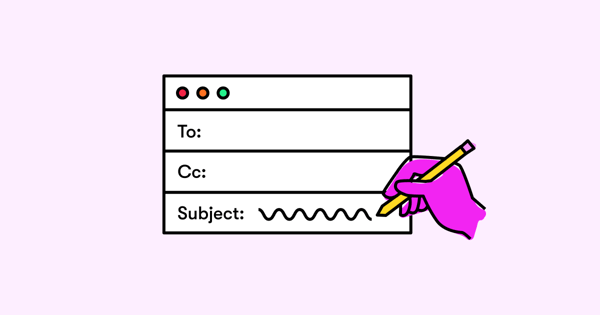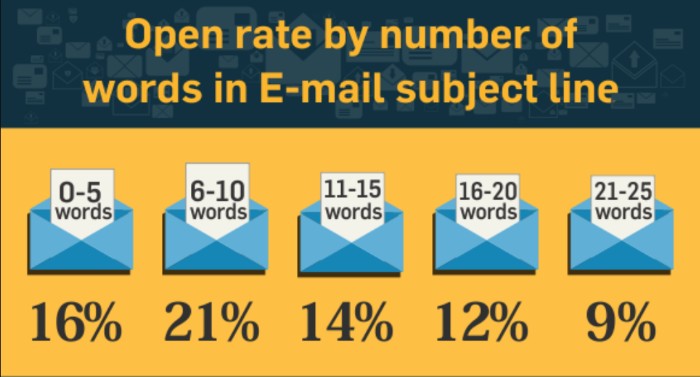Attracting the reader's attention starts with an email subject line, but crafting a great one is no easy feat.
Thus, it's important to perfect this small but powerful element of an email that can ultimately decide if your reader will open and engage with your content or discard it without a second glance.
Whether you're a corporate communications guru, indie business owner, or marketing whizz-kid, mastering the art of drafting captivating subject lines can transform the efficacy of your email campaigns.
But what are some of the best practices for writing an attention-grabbing email subject line?
In this article, you will find some top tips for creating email subject lines that will entice your readers to open up and engage with the content you’ve worked hard on.

9 Email Subject Line Best Practices
Let's dive into each of the best practices for subject lines in email marketing
1. Make It Short And Concise
Short, sweet, and to the point: the perfect subject line.
Consider this, you have a matter of seconds to capture your reader’s attention.
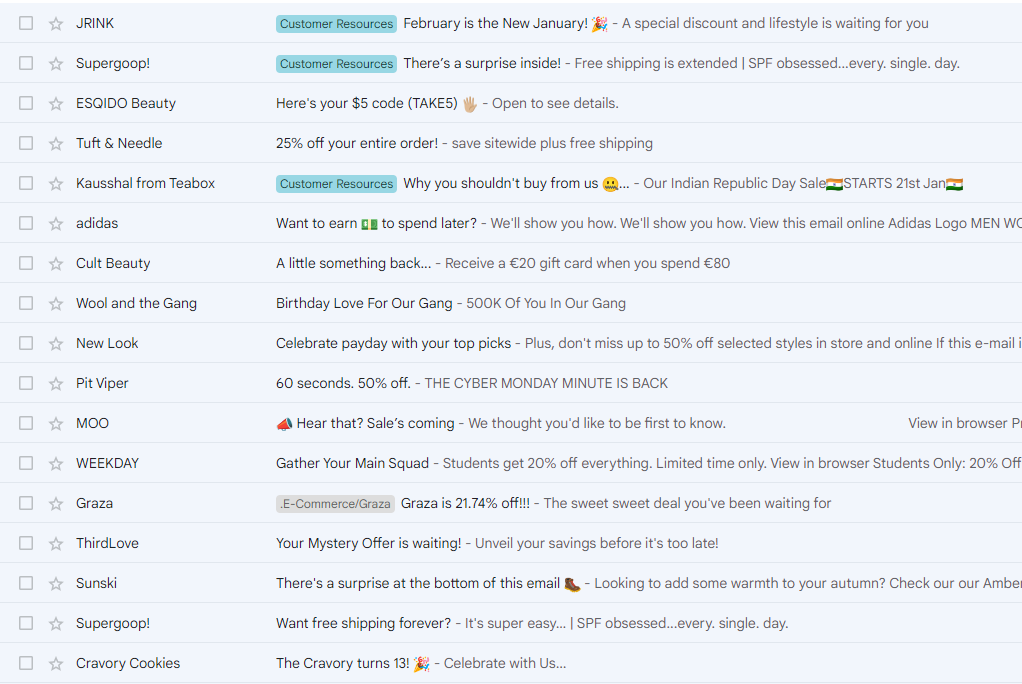 And you’re in a competitive, noisy space.
And you’re in a competitive, noisy space.
Not to mention, your customer is likely checking their email on mobile. Mobile email constitutes most of the total email open rates (41%).
So even smaller real-estate for your clever subject lines. According to recent research, the ideal length is between 6-10 words total.
A few reasons explain why longer subject lines have lower open rates:
- They can have problems with displaying when looking at different devices and browsers
- People skim subject lines and the longer it is, the less chance a reader will go through all of it
But in general, the shorter you can make your subject line and still get your message across, the better.
A/B testing is the only way to identify which length works best for your specific audience. When doing the testing, try out different subject line lengths but keep the messaging the same.
For example:
- Subject Line A: "Let's Talk About Your Goals"
- Subject Line B: "Let's Connect and Talk About Your Goals"
- Subject Line C: "Let's Connect This Week and Talk About Your Goals"
Over time, you'll be able to see which subject line length resonates best with your audience, and use it as a benchmark for future subject lines.s
2. Go Beyond Surface-Level Personalization
Creating personalized subject lines is one of the most effective ways to increase open and click-through rates.
With the word personalized, I don't just mean subject lines like "Limited-time offer for you [firstname]."
Sure, adding a person's first name works, but it's also becoming increasingly common and less effective. Like Zalando is doing here, adding your customer's name can bring some sense of personalization to the subject line.
 If you use only a small personalization element like a name, you might want to consider adding an incentive, such as fear of missing out (FOMO), as Zalando does here.
If you use only a small personalization element like a name, you might want to consider adding an incentive, such as fear of missing out (FOMO), as Zalando does here.
However, personalization can go far beyond that.
To truly maximize the power of personalization, you need to go beyond surface-level personalization and incorporate a deeper understanding of your readers.
The goal is to make it sound like you are talking directly to your customer, not a whole database of contacts.
How can we achieve this?
Chubbies illustrates this concept beautifully.
Our colleague Rikke recently received the following email with a personal subject line:
 It is one thing to use a person's name, but quite another to create a nickname that is unique to every reader. This totally caught Rikke's attention and made her want to click on the email.
It is one thing to use a person's name, but quite another to create a nickname that is unique to every reader. This totally caught Rikke's attention and made her want to click on the email.
They continue the personalization theme in their next email by mentioning Rikke's home city, Aarhus, in the preview text.
![]() Lake Aarhus doesn't exist. Neither is there for most of the cities Chubbies has in its CRM. Regardless, it felt fully personalized for Rikke. There aren’t many brands that have given a nickname to their customers.
Lake Aarhus doesn't exist. Neither is there for most of the cities Chubbies has in its CRM. Regardless, it felt fully personalized for Rikke. There aren’t many brands that have given a nickname to their customers.
You probably shouldn't copy the exact tactics that Chubbies use here, but you can learn a lot from this example of how to personalize your emails beyond the surface level.
3. Use Power Words
Power word: “A word that often evokes an emotional response, positive or negative, in the target audience, leading to a desired outcome.”
These words have the ability to spark curiosity and motivation, making them a great tool for subject lines.
If you just Google "power words" you're going to get a huge list of options. Or you can check this list of 108 power words to get a good starting point.
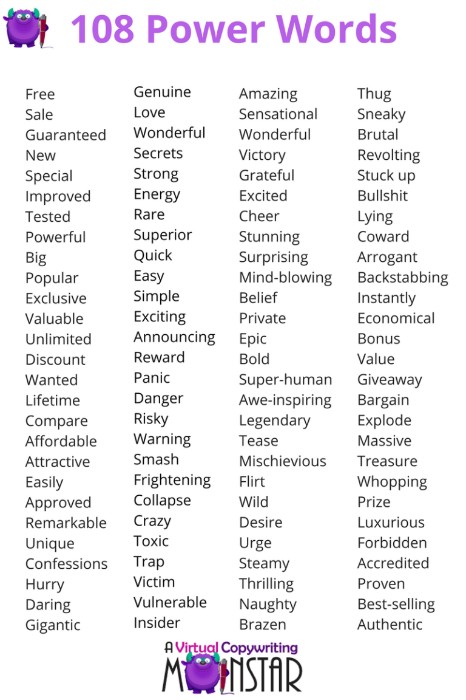 However, don't just use these words randomly.
However, don't just use these words randomly.
To use power words effectively, consider how it relates to your specific message and audience, and make sure it's used in a way that emphasizes the benefit for your reader.
For example, is your email about a new product launch? You could use words like "exciting," "revolutionary" or "amazing."
Or is it a sale email? Consider using some urgency-related power words like "limited-time," "discount," and "offer.”
4. Numbers are your friend
Tell me which of the following two subject lines would you be most likely to open:
"The Best Tips for Email Marketing"
"9 Proven Strategies to Boost Your Email Performance"
If you're like most people, you'd choose the second one.
By adding the number, you suddenly add more value to your subject line. The reader now knows that there are nine strategies within the email, which may provide value and make it more likely they'll open it.
J.Crew Factory is great at using numbers to its advantage. Take a look at their ultra-specificnew arrival subject line:
 The subject line includes two powerful elements — numbers and urgency.
The subject line includes two powerful elements — numbers and urgency.
The number tells exactly how many new products are being released and how much you can possibly save, while the urgency encourages readers to act quickly and take advantage of the limited-time offer.
The odd number "291" is also eye-catching, making it more likely to stand out in the email inbox.
5. Consider Using Emojis
Emojis are your friend when crafting subject lines — they can help to emphasize specific words, phrases, and the overall tone of your email.
Emojis can help you to stand out in the filled email inboxes:
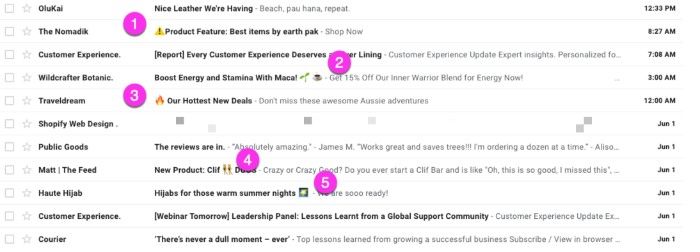 EyeBuyDirect understands the use of emojis well in subject lines:
EyeBuyDirect understands the use of emojis well in subject lines:
![]() The three emojis in their subject line elevate the question-based subject line well. There is a perfect mix of curiosity and playfulness for the reader.
The three emojis in their subject line elevate the question-based subject line well. There is a perfect mix of curiosity and playfulness for the reader.
They don't overdo it or underdo it with the use of emojis.
I want to note that emojis don't work for all brands. It's all about what matches your brand style and what kind of customer base you have.
Consider the context and audience of your email. If it's a formal message, or if the target audience is more serious in nature, emojis may not work.
In the end, the only way to know is to A/B test. Send two different variants of the same email, one with and one without the emojis, and see which performs better.
6.Create Urgency
One of the most reliable ways to increase your email click-through rate is to add a sense of urgency to your email subject lines. Urgency motivates people to take action so that they don't miss out on something.
It can mean anything from limited-time offers to countdown timers.
A good example of a subject line, involving urgency is from L'Occitane.
 L'Occitane's subject line combines two things: urgency, and curiosity.
L'Occitane's subject line combines two things: urgency, and curiosity.
"Your Final Notice" text creates urgency and makes the reader act because they're about to lose on a deal. The "$10, $20, or $30 OFF?" makes you curious about how much you could possibly save.
Despite its simplicity, the above subject line works exceptionally well.
When adding urgency to your subject lines, remember that it can be also overused and feel like manipulating, so you have to be careful there.
You don't want to send out one of these:
 Subject lines like these can also make your emails land in thespam folder, which is something you don't want.
Subject lines like these can also make your emails land in thespam folder, which is something you don't want.
Create a sense of urgency, but don't manipulate your readers by over-promising.
7. Utilize All Available Space
Although you should keep your subject line relatively short, that's not all the real estate you have available.
You also have the preview text (otherwise known as preheader text), which is the second line of text that appears in your email inbox.
 The preview line text is almost equally important as the subject line, so you should make sure to use it effectively.
The preview line text is almost equally important as the subject line, so you should make sure to use it effectively.
The preview text should act as a continuation of your subject line text. It's a great place to add more context to your email, so readers know what awaits them if they click through.
Just make sure you don't add the same text to the preview line as in the subject line — that would literally be a waste of money, and real estate.
8. Don't Make It Spammy
Subject lines are one of the main criteria that email providers use to determine whether an email is spam or not.
If email providers notice "trigger words" in your subject lines, they can consider it suspicious.
Saying things like "Get free products", "Earn twice as much", or using all capitals can make your email go straight to spam, even if it isn't a promotional email.
And when your emails go to spam, your customers won't have a chance to see them, which is obviously the last thing you want.
And if the spammy emails happen to land in the primary inbox, customers may view them as untrustworthy.
I’m talking about subject lines like these:
 Instead of using spammy cliches, focus on providing value, and making sure that your readers know what they're getting when clicking through.
Instead of using spammy cliches, focus on providing value, and making sure that your readers know what they're getting when clicking through.
9. A/B Test Everything
Ecommerce stores lose an average of 18 billion annually due to abandonment carts.
When you think about it, the reason is kind of simple. Most brands don't have a proper A/B testing strategy in place.
This directly reflects testing your subject lines.
The only way to know if your subject lines are working is to A/B test. This means creating two versions of the same email, with the only difference being the subject line.
It provides you with objective data that helps you to identify what is and isn't working with your email campaigns.
Some of the subject line elements you can A/B test include:
- Different lengths of subject lines
- Types of emojis used
- The use of urgency and scarcity
- Personalization
- Different types of images or CTAs
- Capitalization and exclamation points
Track your open rate, click rate, and conversion rate. Always include only one variation at a time and measure the results.
Once you have enough data, you can make a meaningful decision about what works best for your audience.

Improve by experimenting
Email subject line best practices all come down to one thing, which is testing.
There is no one-size-fits-all approach, and you will have to experiment in order to figure out what works best for your audience.
To make testing the most effective, you should equip yourself with the best tools available.
Drip provides an easy way to A/B test your subject lines so you can measure and maximize their effectiveness quickly. And with proper analytics and automation tools, you can keep track of what's working, adjust, and in the end, automate the process.
Take advantage of Drip's 14-day free trial!
